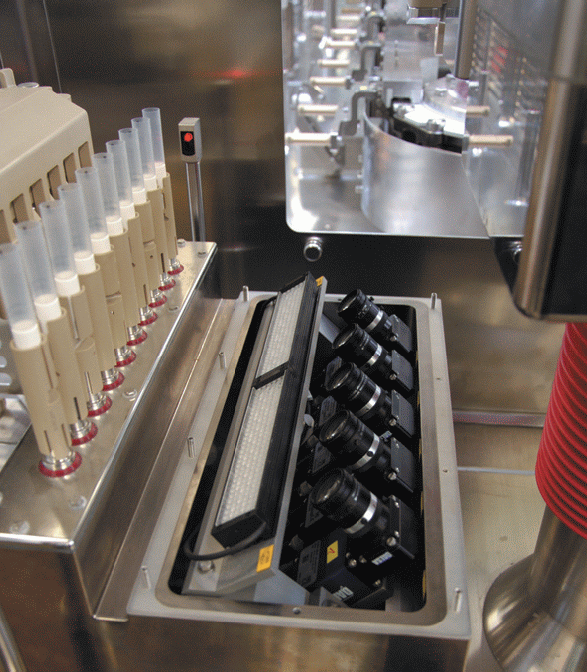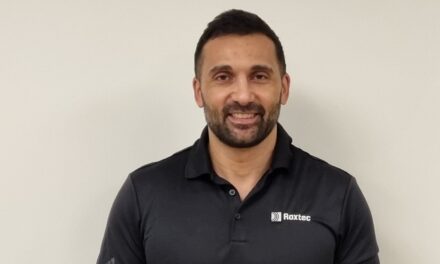 Industrial vision is an important tool in pharmaceuticals and medical technology used in two main areas, inspection during manufacturing and packaging and inspection of labels, codes on the final products. Chris Pitt of Stemmer Imaging takes a closer look at these application areas
Industrial vision is an important tool in pharmaceuticals and medical technology used in two main areas, inspection during manufacturing and packaging and inspection of labels, codes on the final products. Chris Pitt of Stemmer Imaging takes a closer look at these application areas
Inspection applications during the manufacturing process can be particularly demanding since in addition to addressing the specific inspection requirements, the vision systems must be constructed so they can be used within clean-room environments, capable of withstanding any on-line cleaning procedures. For this reason, the components for measurement, illumination and detection often need to be mounted in special chemical resistant housings. This places additional demands on the imaging capabilities since the process will be viewed through a transparent window, and means reliability is particularly important since it can be tedious and time-consuming to access the components for repair or maintenance.
A recent application in Germany for a high-performance filling system for pharmaceutical tubes illustrates inspection capabilities in this sector.
Inspection task
 This application involved adding a vision inspection system to two identical filling machines designed for filling liquids and paste-like materials into plastic tubes. The contents are ‘oral live-virus vaccines’, which the end user can squeeze out like toothpaste. The filling machine features an alignment station to separate the non-oriented tubes as they arrive and align them in an upright position with the tube cap downward. A special gripper seizes 10 tubes simultaneously in each step and transfers them to the alignment and rotation station because before they can be filled, they need to be aligned and moved into a defined orientation. This procedure ensures the tubes will not break along the longitudinal joint during sealing and become leaky and that the printing on the tubes is always in the same position after sealing.
This application involved adding a vision inspection system to two identical filling machines designed for filling liquids and paste-like materials into plastic tubes. The contents are ‘oral live-virus vaccines’, which the end user can squeeze out like toothpaste. The filling machine features an alignment station to separate the non-oriented tubes as they arrive and align them in an upright position with the tube cap downward. A special gripper seizes 10 tubes simultaneously in each step and transfers them to the alignment and rotation station because before they can be filled, they need to be aligned and moved into a defined orientation. This procedure ensures the tubes will not break along the longitudinal joint during sealing and become leaky and that the printing on the tubes is always in the same position after sealing.
The vision solution
Stemmer Imaging worked with Harro Höfliger Verpackungsmaschinen GmbH, a mechanical engineering company specialising in developing integrated system solutions and customised machines for the pharmaceutical, chemical and food industries, on the integration of a vision system into the alignment station. The gripper grasps 10 tubes at a time and puts them into special holders where they are then positioned by rotating them about their longitudinal axes. This is achieved in 400ms. During this process, five Genie-HM1024 cameras from Teledyne DALSA, fitted with Fujinon HF35HA lenses, check two tubes each for the correct position of the print marks needed for proper orientation of the tubes. The image signals are transmitted via a GigE Vision interface to two PCs for evaluation. The results of this evaluation are then communicated to the rotation stations to ensure the positions of the 10 tubes remain within the required precision limit of less than two degrees. The Genie cameras used were able to provide a frame rate of about 110 images per second with a defined field of view resolution of 1,024 x 768 pixels. The cameras were operated in partial scan mode to increase the frame rate as only part of the image was needed for tube alignment. In this way, the system can accommodate more than 220 tubes per minute for cost-effective production. In order to be used in the clean room conditions, all the vision hardware (cameras, lenses and lights) had to be installed in a dedicated housing, designed in accordance with Good Manufacturing Practice regulations and featuring a special surface coating for easy cleaning. Since the tubes are viewed through the housing’s glass window, the installation angle of the cameras had to be selected in such a way as to minimise light reflections on the camera. In addition, 90° angled heads for the Genie cameras were used due to the limited space inside the housing. It was not possible to completely shield the system from extraneous light or a variety of reflections from parts of the machine that were within the cameras’ field of vision. Both these problems were overcome in software. Another difficulty was to detect the white semi-transparent tube edges and the print marks on the tubes against the silver steel background or the glass panes in the machine. Tests performed during the design phase showed blue LED light sources provided the best contrast between the tube and the print mark and between the tube edge and the background.
Standard components
Stemmer Imaging ensured the system was constructed using globally available components so that should any replacements be required, they are readily available internationally.
Stemmer Imaging
T: 01252 780000



